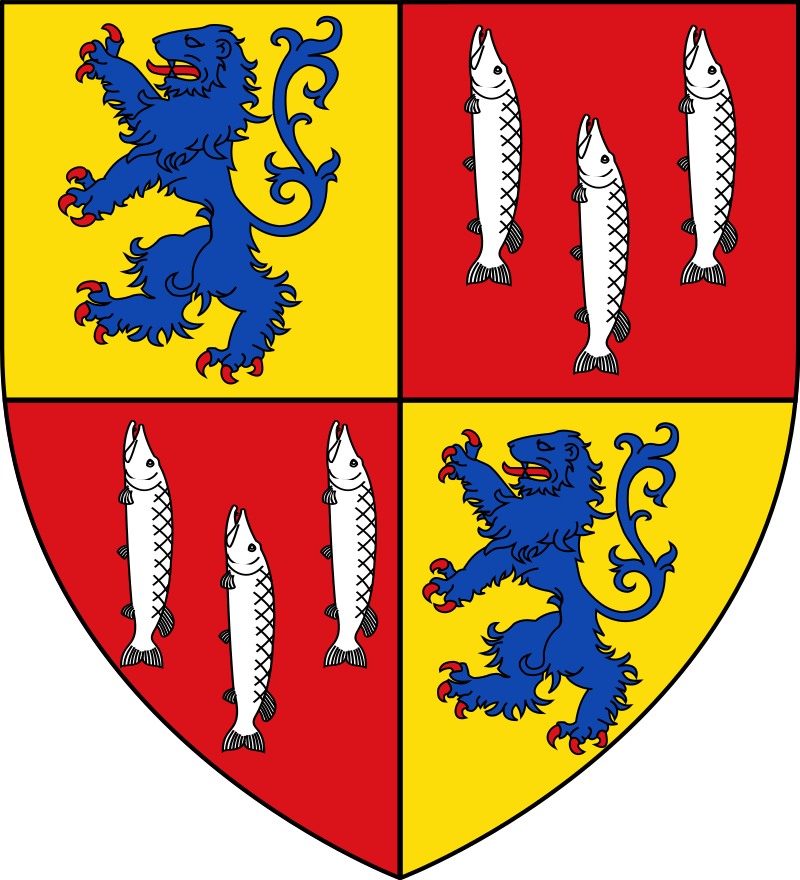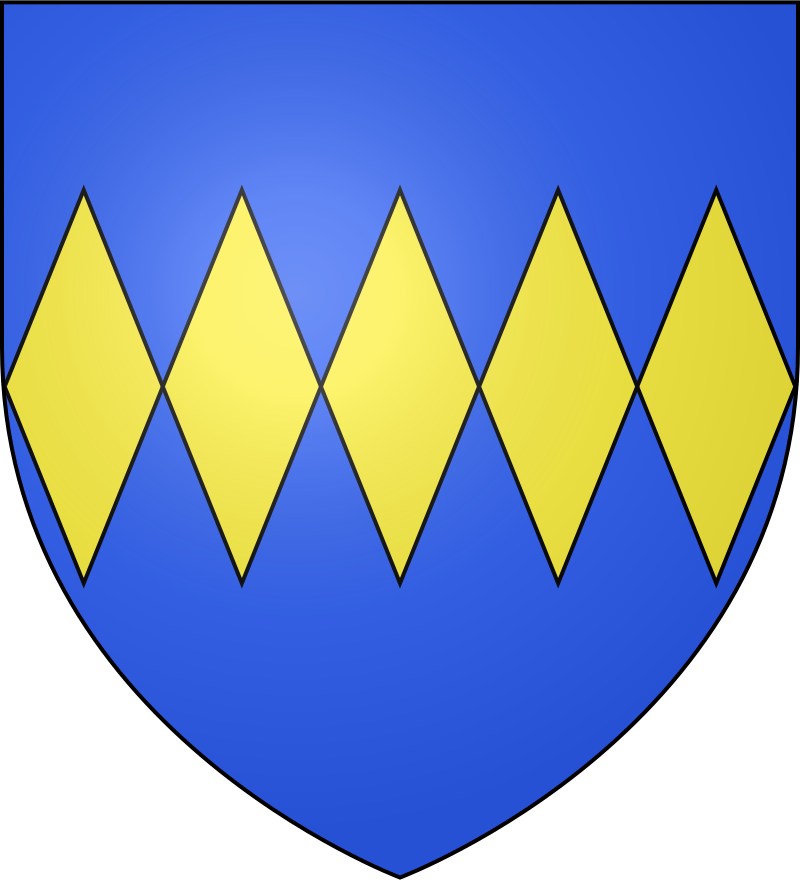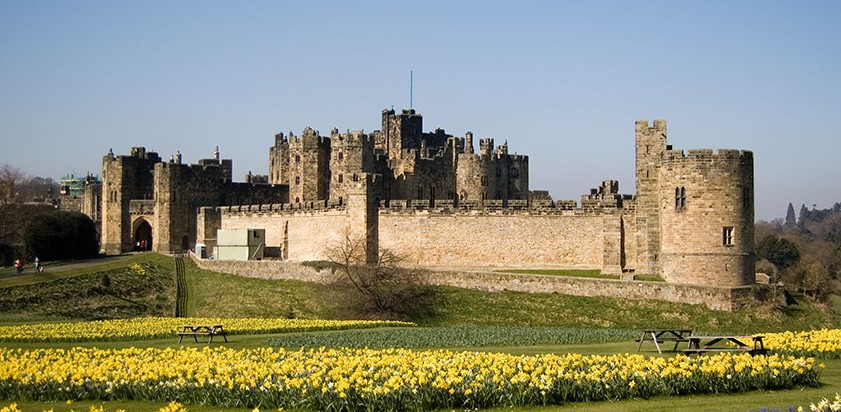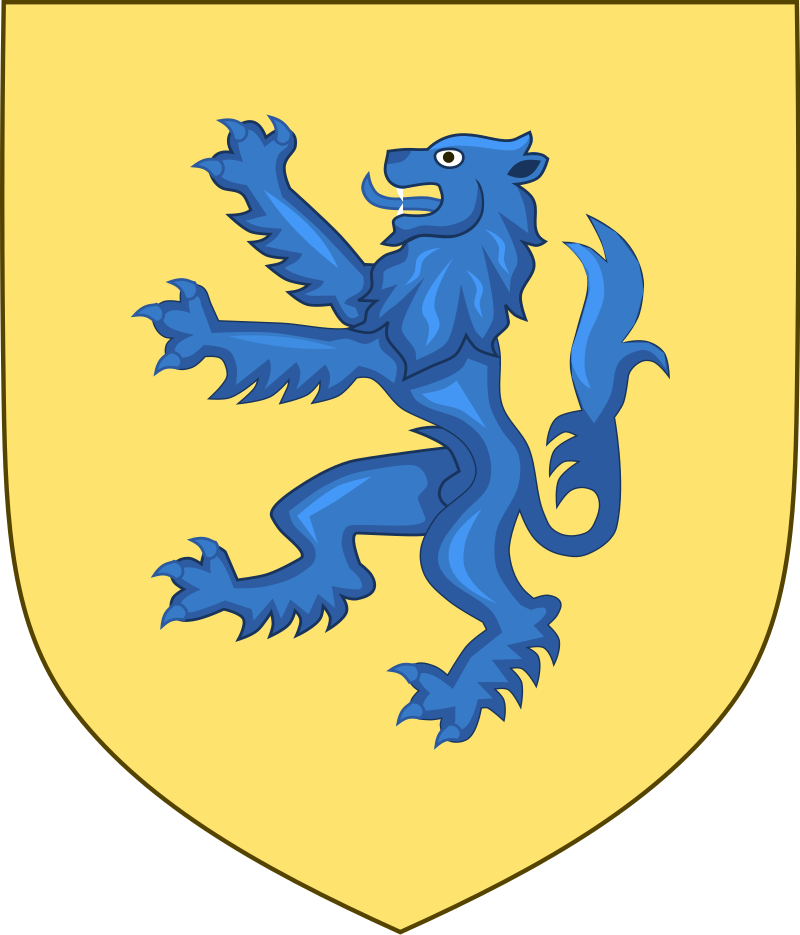|
The Percy family descends from William de Perci (d. 1096/9), a feudal knight from the village of Percy-en-Auge in Normandy, who came to England in the early years of the Norman conquest. Percy-en-Auge translates, more or less, to "Pierce Eye", and this name is thought by some to have once belonged to a local man who lost his eye when it was pierced by an arrow. The Cartulary of Whitby Abbey, a book of charters and deeds pertaining to the abbey, gives 1067 as the year that William de Perci arrived in England. The Cartulary further identifies him as a companion of Hugh d'Avranches (later the 1st Earl of Chester), who was one of the more important nobles of early Norman England. This would seem to indicate that de Perci and d'Avranches did not arrive in England until some months after William the Conqueror's victory at the Battle of Hastings. William de Perci gained favor with the new Norman rulers of England, and he was either rewarded with a grant of lands at and around Topcliffe in North Yorkshire (northern England), and/or he acquired lands there through his marriage to an English noblewoman. Irregardless, the Doomsday Book of 1086 shows him as a large landholder in the North Riding of Yorkshire. He was lord of Topcliffe Castle and known as the 1st Baron of Topcliffe when he joined the First Crusade and traveled to the Holy Land with the forces of Robert Curthose, the Duke of Normandy and son of William the Conqueror. However, de Perci either died of sickness, or was killed in combat in 1096/9, within "sight of Jerusalem". His body was buried at Antioch in Turkey, but his heart returned by his squire to Whitby Abby in North Yorkshire, where it was interred in a medieval Chapter House that stands no more. One of William de Perci's descendants was Henry de Percy (1273-1314), the 8th feudal baron of Topcliffe. Henry's father died only 7 months after he was born, which left him in the care of guardians during his minority. When he finally reached his majority in 1293, after a wait of 20 years, he inherited estates in Sussex and Yorkshire that included the family seat at Topcliffe Castle. He married Eleanor FitzAlan of Arundel the following year, and immediately changed his coat of arms from the "azure, five fusils in fess or" that his father's ancestors wore, to those of "a lion rampant azure", which were the arms of his wife's family, the Earls of Arundel. As Henry's power and influence grew, he was able to buy Alnwick Castle in Northumbria in 1309 for £4666 from the Prince Bishop of Durham, borrowing more than half the amount from Italian bankers. This made him lord of one of the larger castles in the northern march, and the same year King Edward II elevated Henry to 1st Baron Percy of Alnwick. Henry began rebuilding the new castle, a task he did not live to see completed, and the old castle that the family held at Topcliffe was gradually abandoned
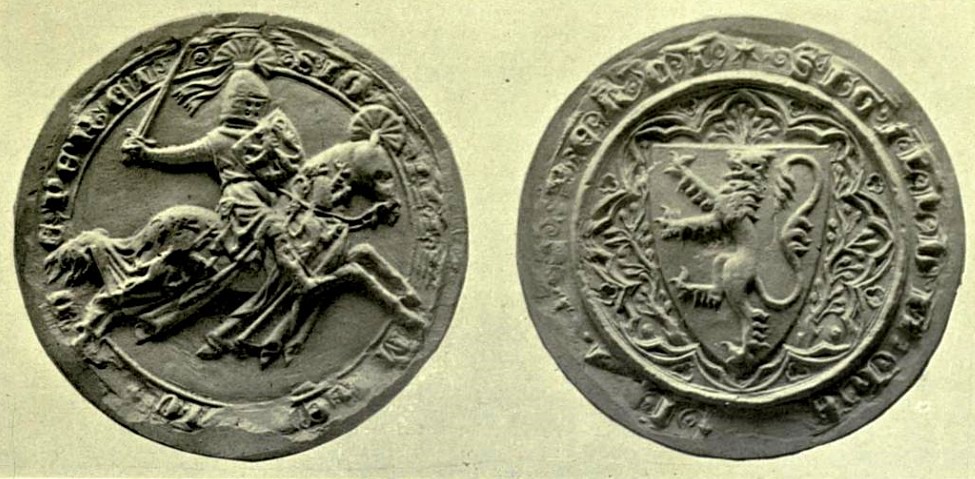
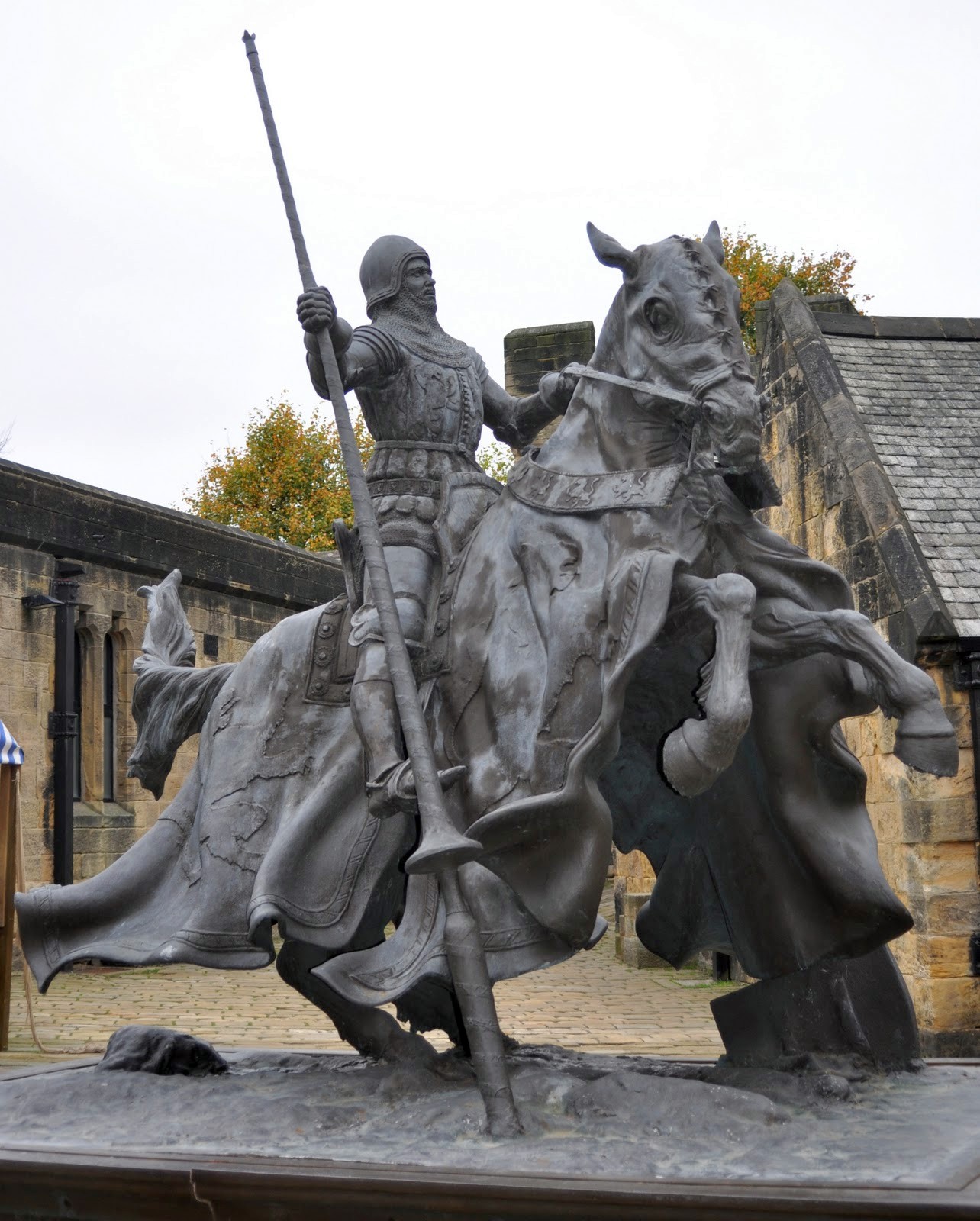
The great-grandson of Henry, the 1st Baron Percy of Alnwick was Henry, the 4th Baron, who was elevated to the 1st Earl of Northumberland in 1377 by King Richard II. Henry, the 1st Earl, was also the father of the most famous Percy of them all, the reknowned knight Sir Henry Percy (1364-1403), who was better known as the "Hotspur", due to "his speed in advance and readiness to attack", when he was campaigning in the north against the Scots. However, Henry the Hotspur never became an Earl of Northumberland, as he was killed at the Battle of Shrewsbury, during his father's lifetime, while leading a rebel army against King Henry IV. Henry Hotspur's son survived him, and the Percy line continues from this son down to his descendant Lady Elizabeth Percy (1667-1722), who was Baroness Percy, and the daughter and sole heir of Joscelyn Percy (1644-1670), the 11th Earl of Northumberland. As such, Lady Elizabeth's father Joscelyn was the last male of direct Percy lineage to inherit the Earldom. The "Percy" surname died out twice in the male line during the 570 or so years from the time of William de Perci, the family patriarch, to the time of his descendant Joscelyn Percy. However, both times the name survived when it was assumed by the husband of a Percy heiress, and subsequently borne by their descendants. First, although William de Perci's male line died out in 1174/5 with the death of his grandson William II, his surname was then assumed by the latter's grandson Richard de Louvain (d. 1244), and therein borne by his heirs. Next, the surname died out again when Richard de Louvain's descendant Joscelyn Percy, the 11th Earl of Northumberland, died in 1670 without a male heir. However, his surname was assumed 70 years later in 1740 by Sir Hugh Smithson (c.1714-1786), when Smithson married Joscelyn's great-granddaughter Lady Elizabeth Serymour. Sir Hugh was subsequently created the 1st Duke of Northumberland in 1766 by an act of Parliament, and his heirs today continue to bear the Percy surname.
|
 The House of Percy
The House of Percy 

